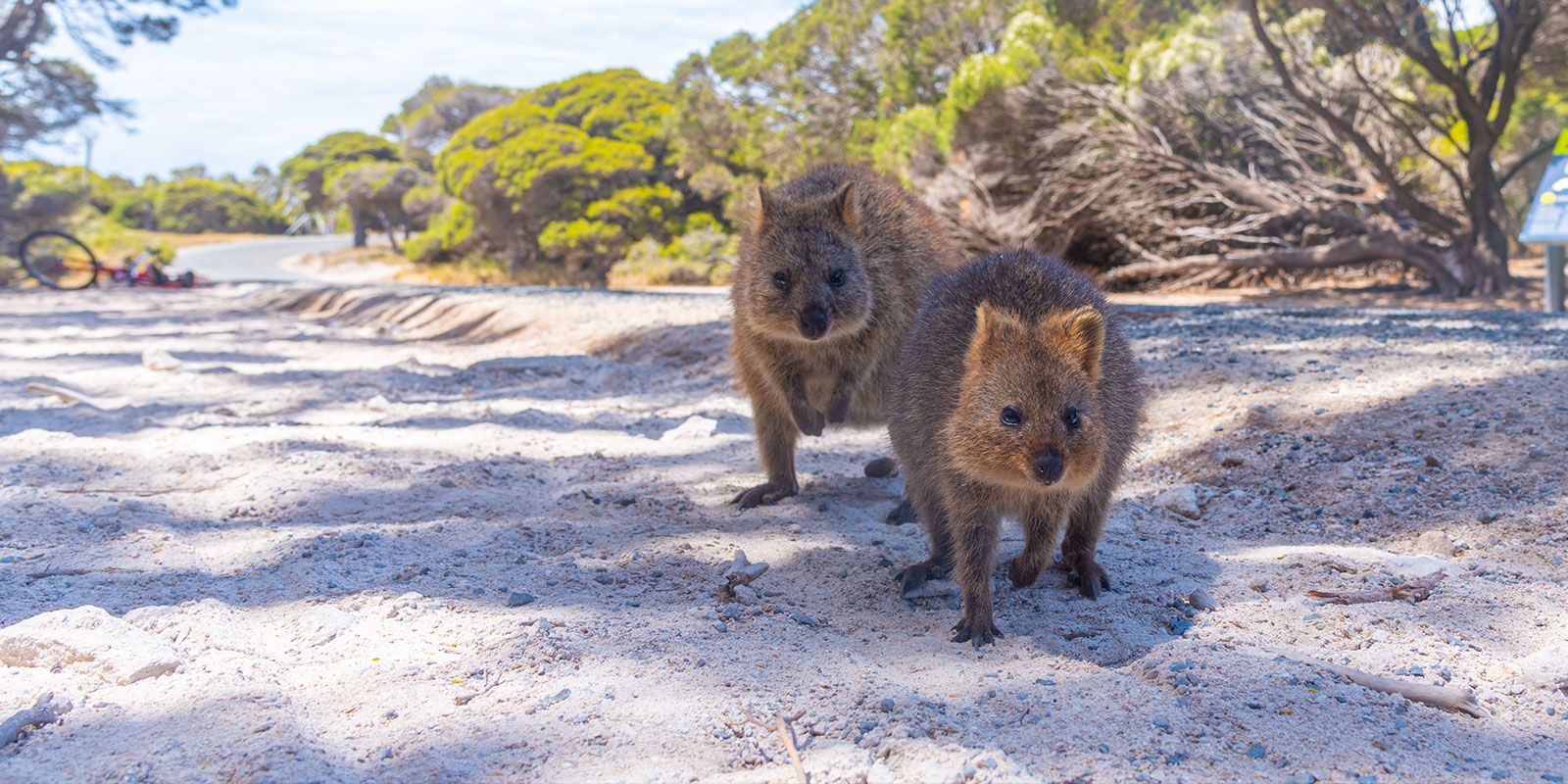
The best places to spot Australian wildlife
There’s just something special about spotting Aussie animals in the wild.
Moreover, these wildlife encounters usually excite adults as much as kids. When on a road trip or a bush walk, it's exciting to be the first person to spot a koala, wombat, echidna or something else.
If you want to be thrilled by a wildlife encounter, we have the lowdown on the best destinations to go.
We’ve previously covered off the best places to spot kangaroos in the wild. Now, let’s concentrate our energies on Australia’s many other popular cute and cuddly creatures.
Let’s start with one of the most elusive Australian animals, the platypus. The Tasmanian town of Latrobe, 10km south of Devonport, is your best bet for glimpsing these fascinating creatures: it bills itself as the ‘Platypus Capital of the World’.
Warrawee Reserve is the venue, and guided tours increase your chances of seeing these billed beauties, as does visiting in warmer months when platypuses are more visible.
Another promising area to spy these spotlight dodgers is in Queensland’s Eungella National Park, 85km west of Mackay. Head to Broken River (look for the bridge) and fix your gaze in the water, keeping watch for any signs of air bubbles. Dawn and dusk present the best opportunities to see platypuses.
In New South Wales, the Snowy Mountains town of Bombala gifts great viewing opportunities of these native animals at aptly named Platypus Reserve.
The New South Wales town of Gunnedah, 75km west of Tamworth, claims to be the ‘Koala Capital of the World’ (there’s that ‘world’ claim again). Despite recent reports suggesting Gunnedah’s declining koala population puts its proud title at risk, the town is still a prime viewing spot for these leave munchers. Head to Porcupine Lookout Reserve or try the areas that are conveniently located around the local visitor information centre.
In Victoria, the Great Ocean Road region is the best place to spot an iconic Australian animal. Koalas can reliably be spotted by the tree-load at Kennett River, which is sandwiched between Apollo Bay and Lorne. Don’t forget to point some of your gaze towards the incredible coastline, too.
In the other direction in the Gippsland region, Raymond Island has a huge koala population. These native animals were first brought to the island in the 1950s and can be spotted with ease. Raymond Island is within close range of Bairnsdale and can be reached via a free ferry service.
Queensland’s magnificent Magnetic Island, just a 20-minute ferry ride from Townsville, is another prime koala-spotting destination. The tree huggers here were introduced to the island in the 1930s and appear suited to the relaxed lifestyle and laidback vibe.
The sight of a waddling wombat always thrills, and these native animals are most likely to make an appearance for the public at dawn and dusk. The New South Wales town of Kangaroo Valley, 45km from Kiama, has a thriving bare-nosed (common) wombat population, as well as plenty of other wildlife.
Once more, the Gippsland region shows it’s a wildlife hotspot. On this occasion, Wilsons Promontory National Park is your best bet for wombat watching when in Victoria.
Located off the beautiful East Coast of Tasmania, Maria Island is the ideal location to peer at wombats. Reach Maria Island via a ferry from Triabunna.
One of the most intriguing Australian animals, short-beaked echidnas reside throughout Australia. However, it’s difficult to narrow down particular areas in which they reliably congregate. To spot them, you’ll require a fair dose of patience and luck.
New South Wales’ Murramarang National Park, near Batemans Bay, can be a hotspot in October and November.
Phillip Island in Victoria is another area to try your luck, as is the Grampians region.
Once more, Kangaroo Island in South Australia offers genuine opportunities to spot echidnas. This great destination can be found travelling along the Fleurieu Peninsula.
Or head to Cradle Mountain in Tasmania – the national park offers the chance to see these spikey creatures year-round. Mount Field National Park, 75km from Hobart, is another good spot to attempt to locate echidnas.
This category is exclusive to Western Australia, sorry. Yet as these cute creatures are most notably found at one of the state’s most prized visitor destinations – Rottnest Island – it’s well worth introducing yourself.
In fact, the island earns its name thanks to the quokka population: upon seeing quokkas, Dutch explorer William de Vlamingh mistakenly thought he had stumbled upon vermin, and so Rottnest simply translates as ‘rats nest’. However, these adorable creatures are anything but rat like – poor Willy must’ve been having an off day. Rottnest Island is a brilliant daytrip destination when in Perth.
Ready to book at BIG4 trip to find some wildlife? Browse parks here.